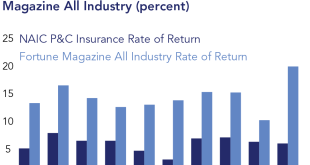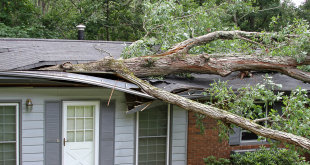Advocates are stepping up the pressure for more openness in how home insurance prices are set. It’s becoming a real concern, especially as extreme weather events seem to be happening more and more often. You know, those hurricanes, wildfires, and floods that can really wreak havoc? Well, they’re making insurance premiums jump, and homeowners are feeling the squeeze, often without a clear understanding of why. It kinda leaves you wondering, doesn’t it? Are you really covered, and can you even afford it?
The Rising Cost of Home Insurance in a Changing Climate
Let’s face it, the cost of protecting your home is going up, and climate change is a big part of the reason. Insurance companies are trying to navigate a world where extreme weather is less of a rare occurrence and more of, well, the new normal. It’s not just about the occasional storm anymore; it’s about planning for a future where those storms might be bigger, stronger, and more frequent. Who knows what’s next?
Factors Driving Premium Increases
So, what’s behind these rising premiums? Well, a bunch of things, actually. Obviously, the increased frequency and severity of extreme weather events play a huge role. But it’s also about the cost of repairs and rebuilding after these disasters. Everything from lumber to labor gets more expensive when everyone’s trying to rebuild at the same time. And let’s not forget about reinsurance – insurance for insurance companies – which also gets pricier when risks go up. It’s a domino effect, really. Are we even surprised?
Impact on Vulnerable Communities
And here’s the really tough part: these rising costs hit vulnerable communities the hardest. Think about it – if you’re already struggling to make ends meet, a sudden jump in your home insurance premium can be devastating. It can force families to make impossible choices, like cutting back on essentials or even going without insurance altogether. And that’s a scary place to be, especially when you live in an area prone to natural disasters. It’s a real mess, if you ask me.
Lack of Transparency: A Key Concern
One of the biggest gripes people have is that it’s so hard to figure out how insurance companies actually come up with their prices. It’s like a big black box, and you’re just supposed to trust that they’re being fair. But how can you trust something you don’t understand? It’s like trying to assemble furniture without instructions – frustrating, to say the least.
Complex Pricing Models and Hidden Data
Insurance companies use these incredibly complex pricing models that factor in everything from your roof’s age to the distance to the nearest fire hydrant. Okay, that last one might be a slight exaggeration, but you get the idea. The problem is, they don’t always share exactly how they weigh these different factors. And sometimes, they use data that you might not even be aware of. It leaves you feeling kinda powerless, doesn’t it?
Difficulty Comparing Policies
Ever tried to compare home insurance policies? It’s a nightmare! Every company has its own way of doing things, its own jargon, and its own set of exclusions. It’s like trying to compare apples and oranges… and maybe a few bananas thrown in for good measure. Without clear, standardized information, it’s almost impossible to make an informed decision. And that’s exactly what the insurance companies are banking on, I suspect.
Advocates’ Demands for Greater Clarity
That’s why advocates are pushing for more transparency. They believe that homeowners have a right to know how their premiums are calculated and what factors are driving those costs. It’s not about getting a free ride; it’s about having a fair shake. You know, a level playing field.
Standardized Risk Assessments
One idea is to create standardized risk assessments. This would involve using a consistent set of criteria to evaluate the risk associated with a particular property. This way, you could easily compare different policies and see exactly how each company is assessing your risk. It would be like having a common language that everyone understands. A little too utopian? Maybe.
Public Access to Data
Another proposal is to make more data publicly available. This could include things like historical claims data, climate risk projections, and the factors that insurance companies use to determine premiums. With access to this information, homeowners could better understand the risks they face and make more informed decisions about their coverage. Knowledge is power, as they say. Though, I’m not sure who “they” are.
Potential Benefits of Increased Transparency
More transparency could really empower you. Imagine knowing exactly why your premium is what it is and being able to compare policies side-by-side. It could save you money, give you peace of mind, and even encourage you to take steps to reduce your risk. Pretty cool, huh?
Empowered Homeowners
With more information, you could shop around for the best rates, negotiate with your insurance company, and even take steps to make your home more resilient to extreme weather. Maybe you’d invest in a stronger roof, install flood barriers, or clear brush away from your property. It’s all about taking control of your own destiny. Or at least your insurance rates.
Improved Risk Mitigation Strategies
Increased awareness of climate risks could also lead to better risk mitigation strategies at the community level. If everyone understands the risks they face, they’re more likely to support investments in infrastructure, zoning regulations, and other measures that can protect their homes and businesses. It’s about working together to build a more resilient future.
Challenges to Implementation
Of course, getting to a more transparent system won’t be easy. There are plenty of obstacles in the way, including resistance from the insurance industry and the challenges of collecting and managing all that data. It’s a big undertaking, no doubt about it.
Industry Resistance
Some insurance companies may resist these changes, arguing that their pricing models are proprietary and that making data public would give their competitors an unfair advantage. They might also claim that it would be too expensive or too difficult to implement these changes. But, really, is it about cost, or control?
Data Collection and Management
Collecting and managing all the necessary data would also be a major challenge. It would require a coordinated effort from government agencies, insurance companies, and other stakeholders. And it would be crucial to ensure that the data is accurate, reliable, and accessible to everyone. It’s a lot to ask, but not impossible.
The Future of Home Insurance in an Era of Extreme Weather
So, what does the future hold for home insurance in a world of increasing extreme weather? It’s hard to say for sure, but one thing is clear: the status quo isn’t sustainable. We need to find new ways to adapt to these changing risks and ensure that everyone has access to affordable and adequate insurance coverage.
Adaptation and Innovation
This could involve things like developing new insurance products that are tailored to specific climate risks, using technology to improve risk assessments, and incentivizing homeowners to take steps to protect their properties. It’s all about finding innovative solutions that can help us navigate this new reality. Necessity is the mother of invention, after all.
Government Regulation and Oversight
Ultimately, government regulation and oversight will likely be necessary to ensure that the home insurance market is fair, transparent, and sustainable. This could involve setting standards for risk assessments, requiring insurance companies to disclose more information about their pricing models, and providing assistance to homeowners who are struggling to afford coverage. It’s about creating a system that works for everyone, not just the insurance companies.
In the end, the push for transparency in home insurance costs is about more than just saving money. It’s about empowering homeowners, building more resilient communities, and creating a more equitable future. It’s a tall order, but one worth striving for. What do you think? Have you had issues with rising premiums or lack of clarity? I’d be interested to hear your take on it.
 seeme
seeme




